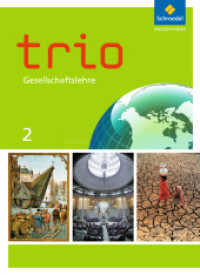- ホーム
- > 洋書
- > 英文書
- > Transportation
Full Description
When using the electric taxi system, pilots will be able to load up their passengers, taxi to the runway run up area, and start their engines—all without using fuel.
Reducing Business Jet Carbon Footprint details how business jets equipped with the aircraft electric taxi system will be able to land, turn off main engines and taxi on the tarmac using electric power. Aerospace engineer/scientist and licensed FAA commercial pilot Dr. Thomas F Johnson describes how the electric taxi system saves fuel (and reduces emissions) for medium to long range business jets by using electricity for certain aspects before take-off and after landing.
Dr. Johnson's work as an Aerospace engineer has rewarded him with three patents related to the aircraft gas turbine engine (GTE). His knowledge of commercial flight and plane mechanics are featured in Reducing Business Jet Carbon Footprint, where he explains the details (and potential costs) of installing the electric taxi system. Johnson examines how the use of clean energy will improve airport air quality and preserve fuel consumption for when it's needed. His writing models and simulates the exciting new technological opportunities for air travel—ready to be put into service.








